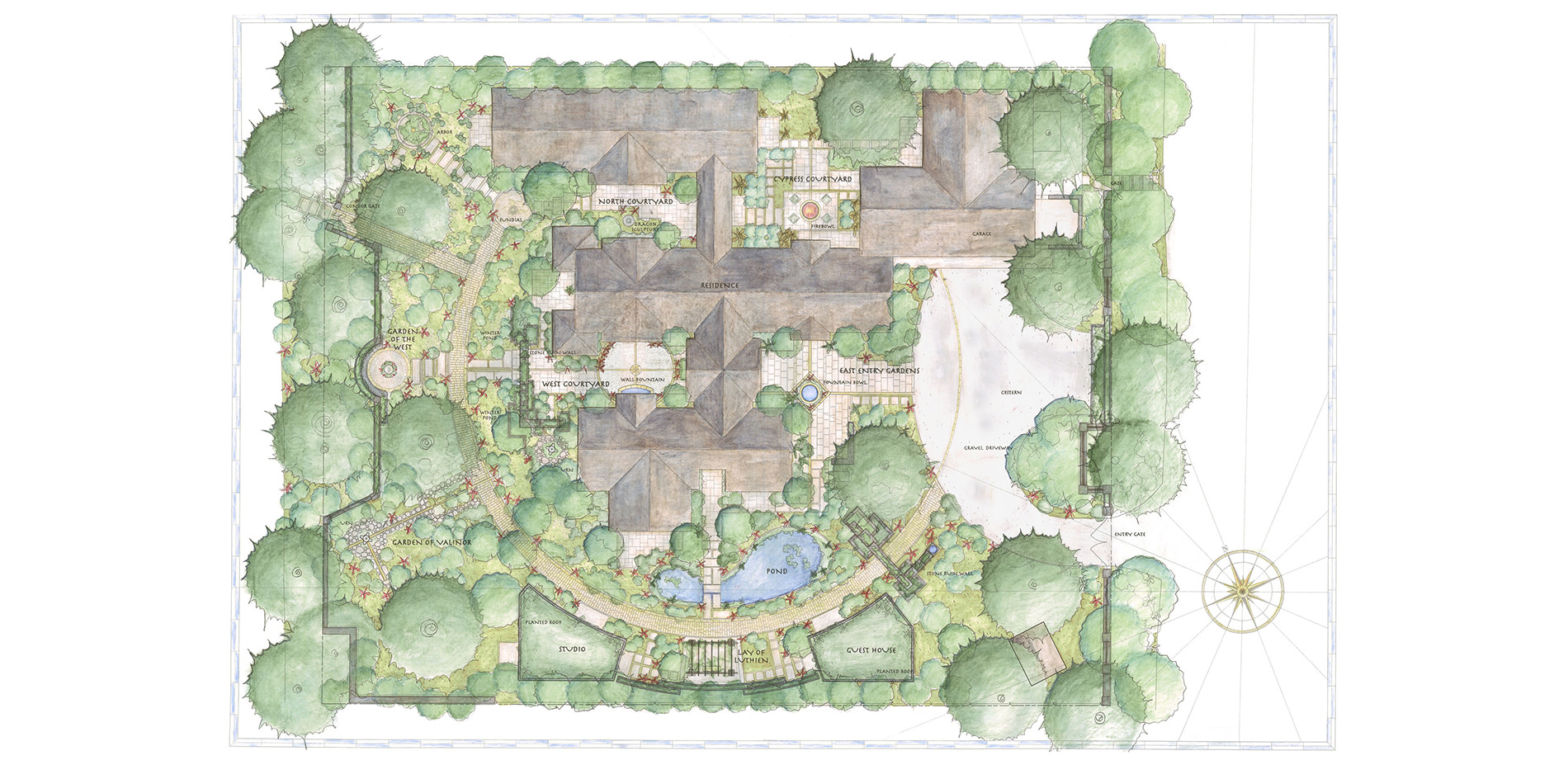
The master plan shows the circular path that connects the variety of courtyards and garden spaces.
Photo Credit: Master Plan - Arterra
Media: Please submit high-resolution image requests to images@asla.org.
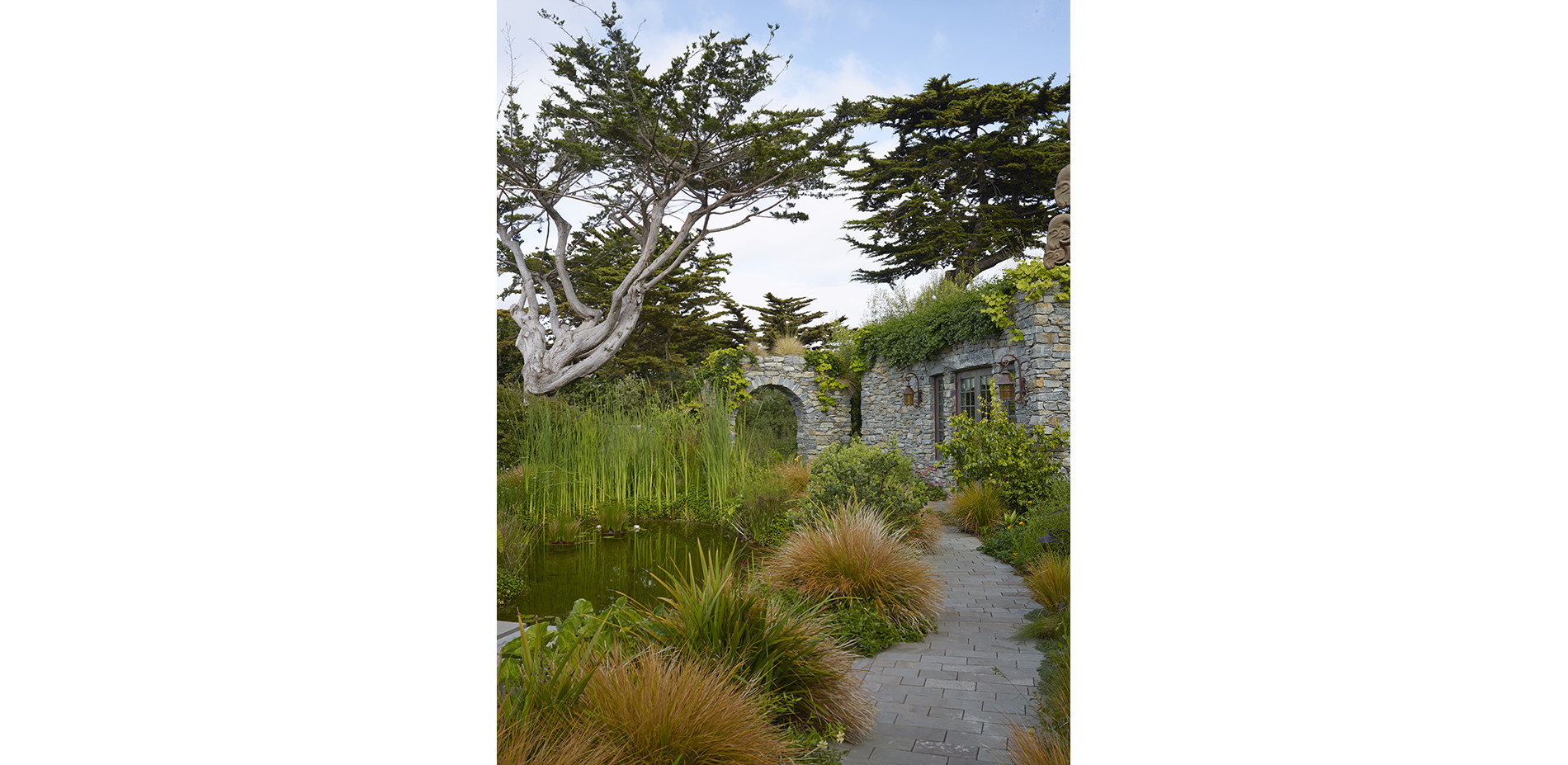
To the left is a pond that is filled with water collected on site. The planted roofs slow rainwater runoff.
Photo Credit: Marion Brenner
Media: Please submit high-resolution image requests to images@asla.org.
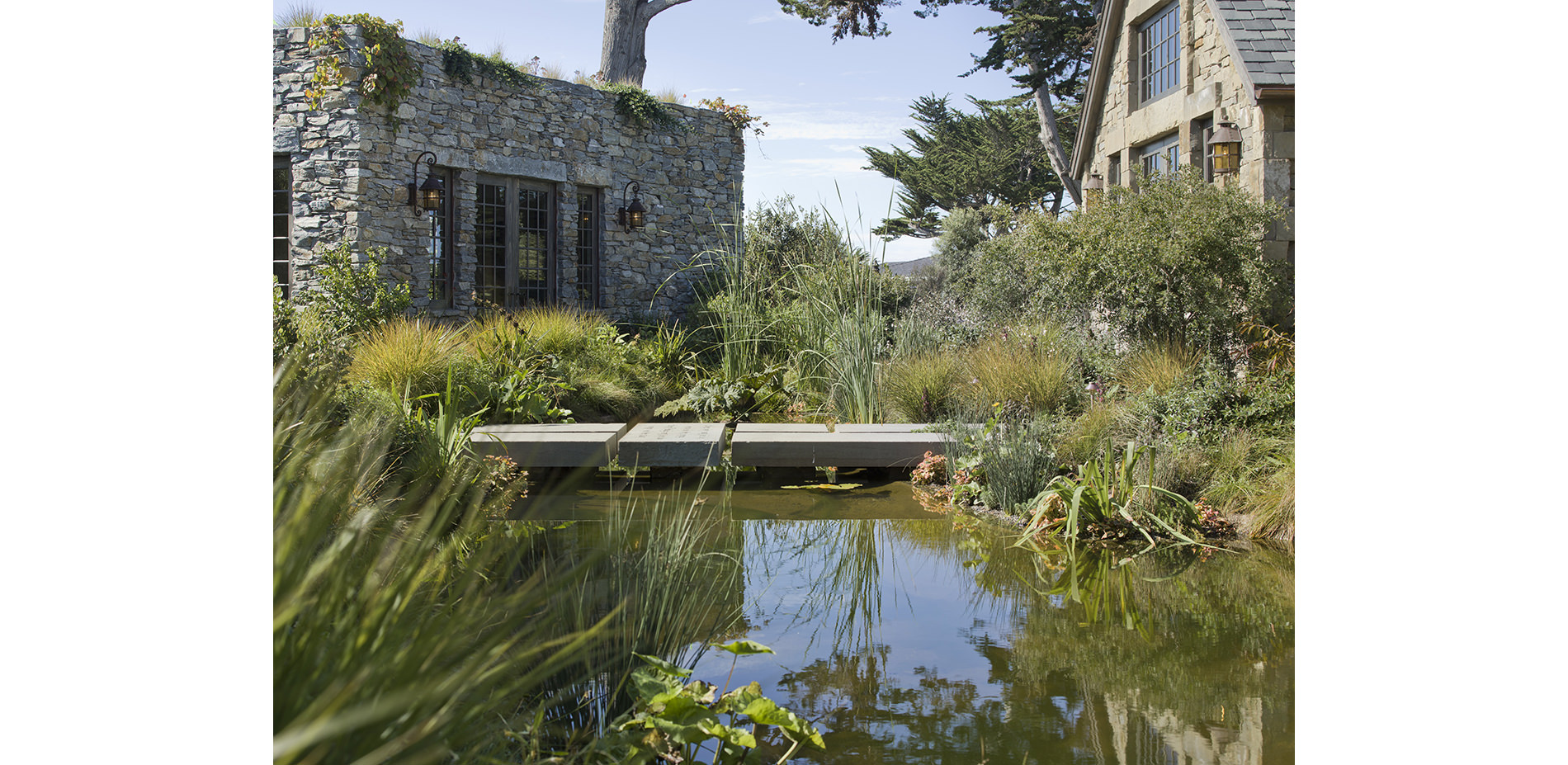
The pond was created to be habitat for birds, turtles and frogs. Planted edges form a constructed wetland, filtering the water before it returns to pumps and equipment.
Photo Credit: David Livingston
Media: Please submit high-resolution image requests to images@asla.org.
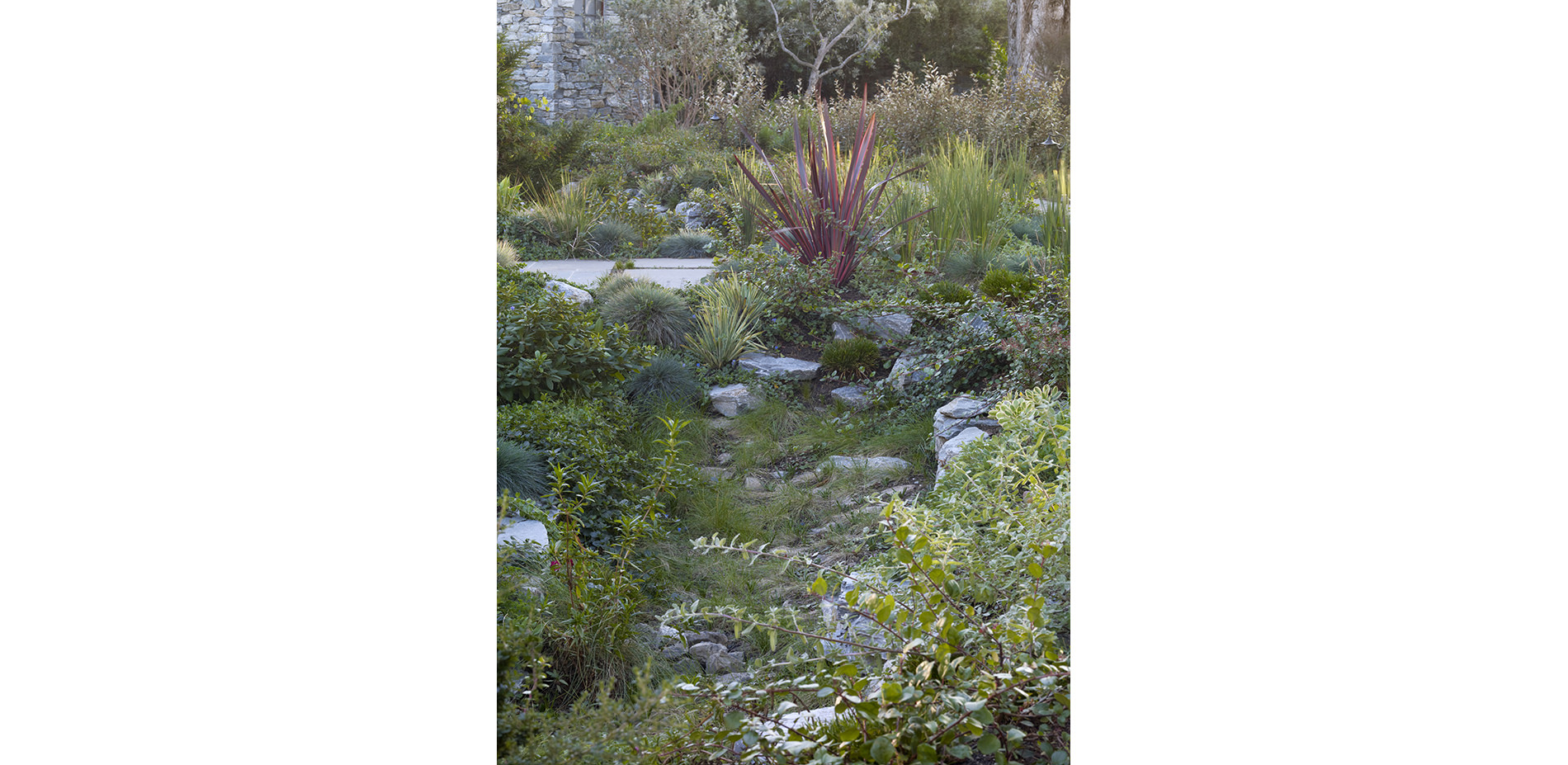
The winter ponds collect additional waters and hold until they naturally percolate back into the water table.
Photo Credit: Marion Brenner
Media: Please submit high-resolution image requests to images@asla.org.
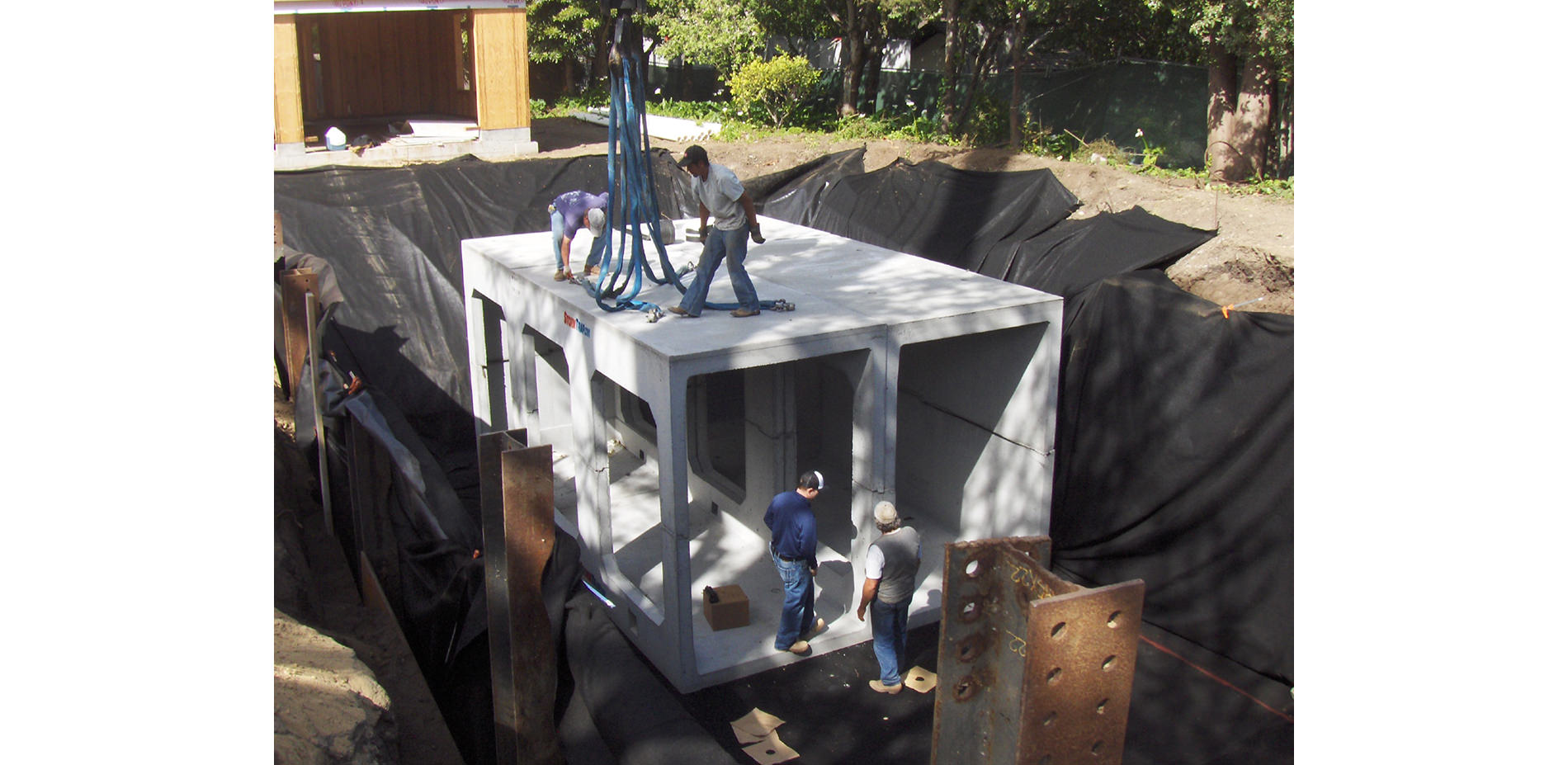
Most of the roof runoff is collected and stored in a 42,000 gallon cistern, buried under the driveway. This water is used throughout the summer to replenish the pond, fountains and irrigation.
Photo Credit: Arterra
Media: Please submit high-resolution image requests to images@asla.org.
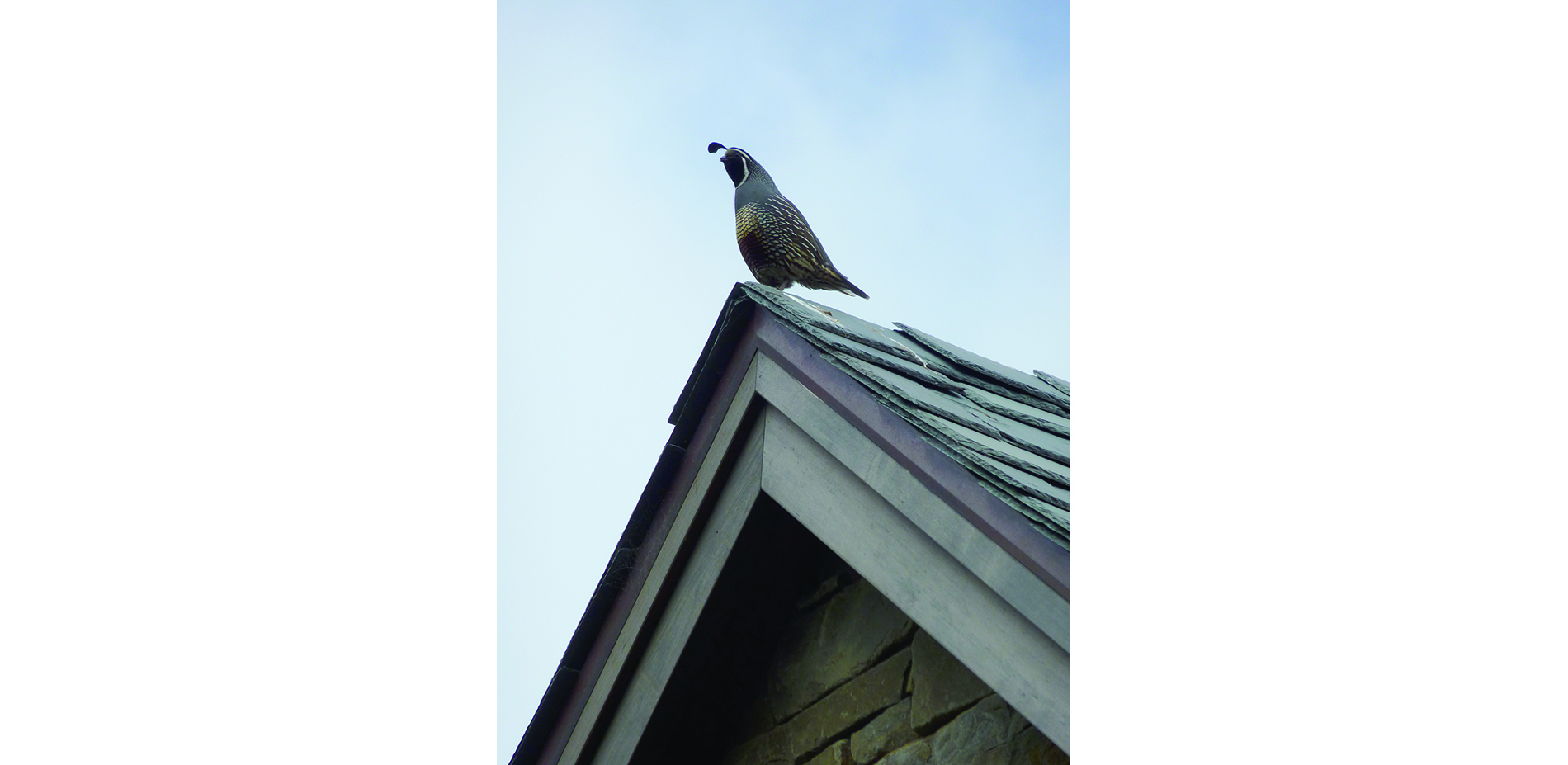
Habitat was very important for this project, especially for quail. Plantings were designed to create an ideal nesting site, and there have been multiple pairs on-site for successive years.
Photo Credit: Arterra
Media: Please submit high-resolution image requests to images@asla.org.
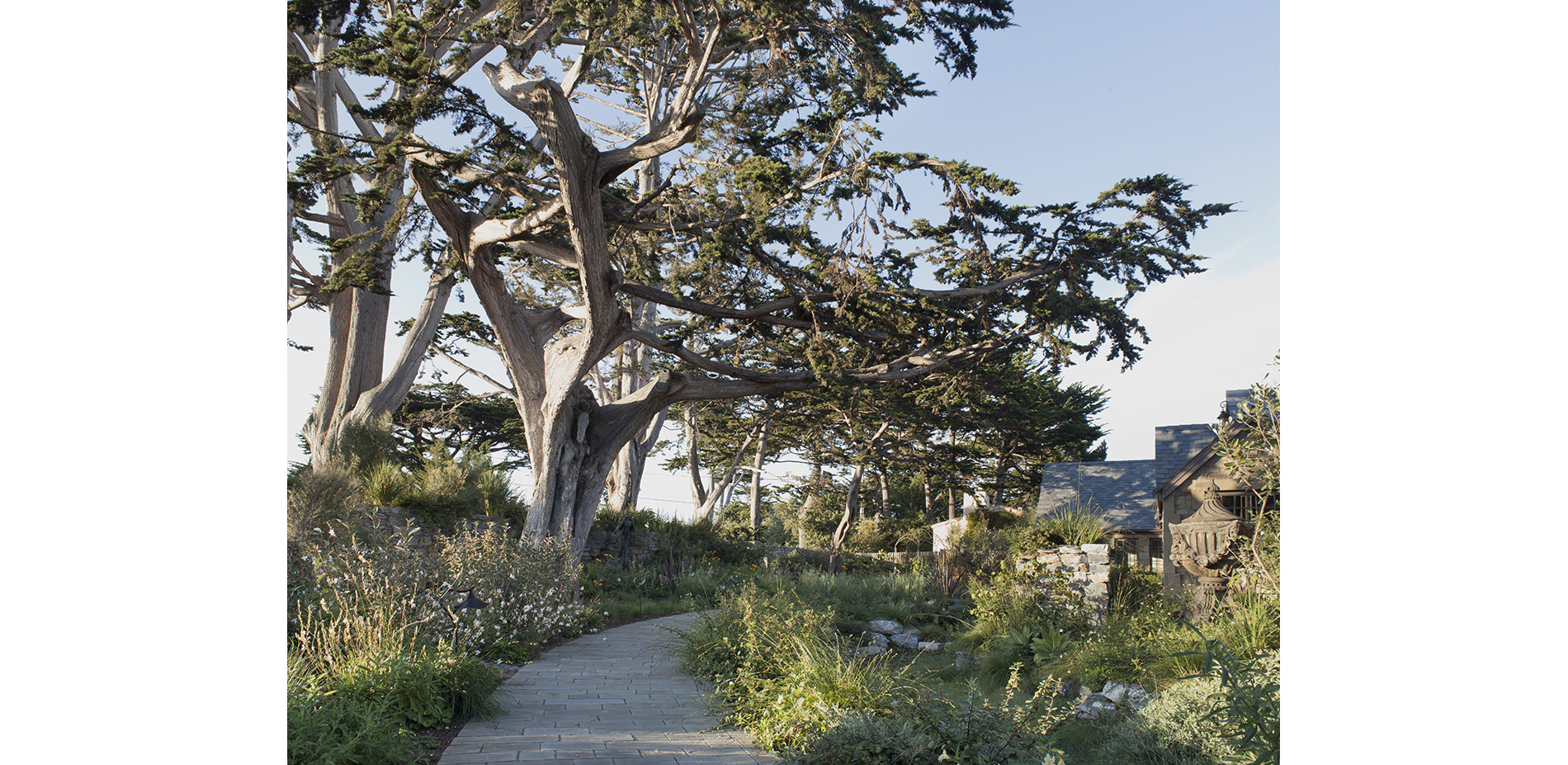
The path was designed to celebrate the Monterey Cypress that ring the perimeter of the property.
Photo Credit: David Livingston
Media: Please submit high-resolution image requests to images@asla.org.
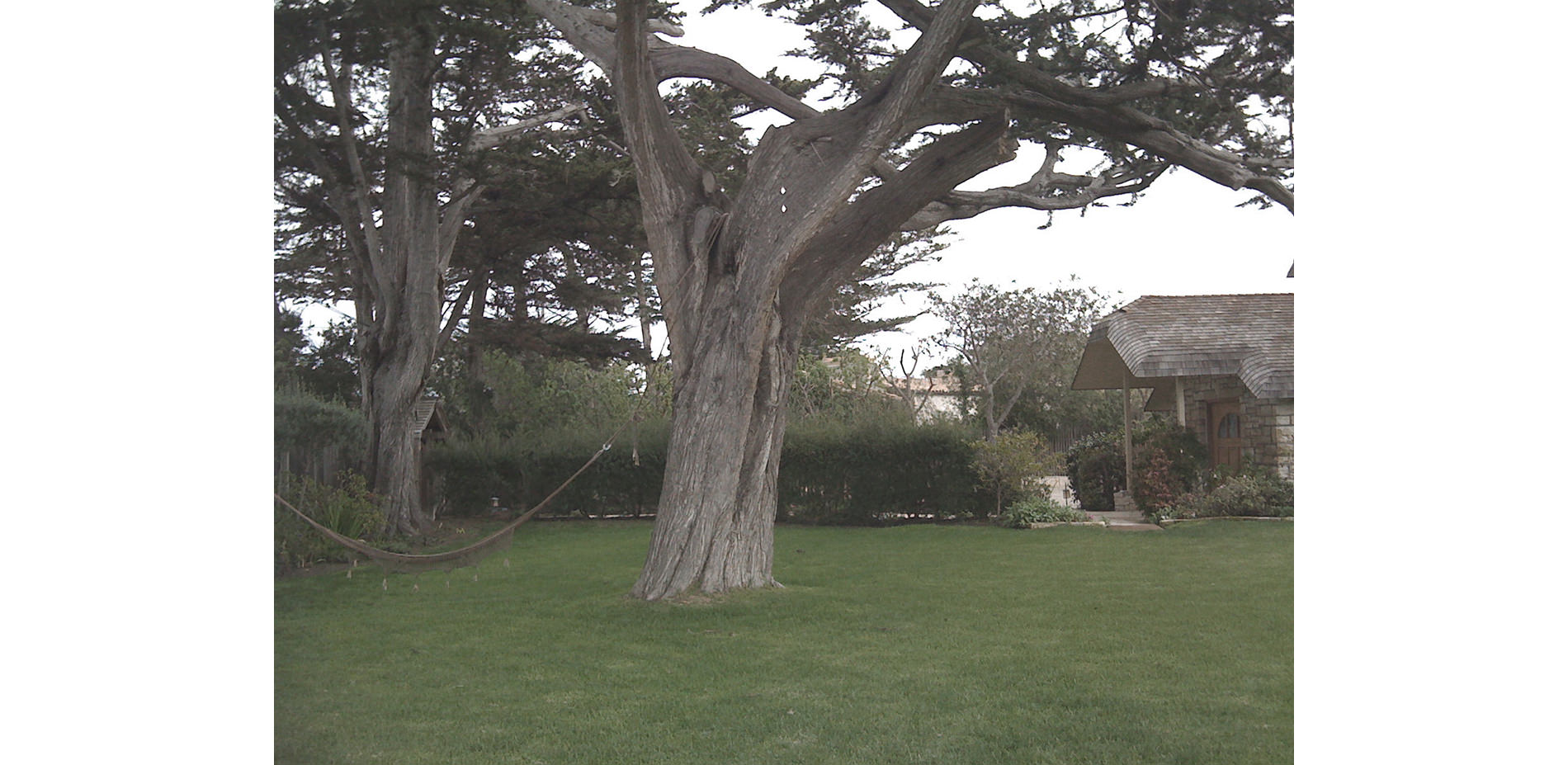
This photo shows the property before, with a large expanse of lawns, and the Monterey Cypress.
Photo Credit: Arterra
Media: Please submit high-resolution image requests to images@asla.org.
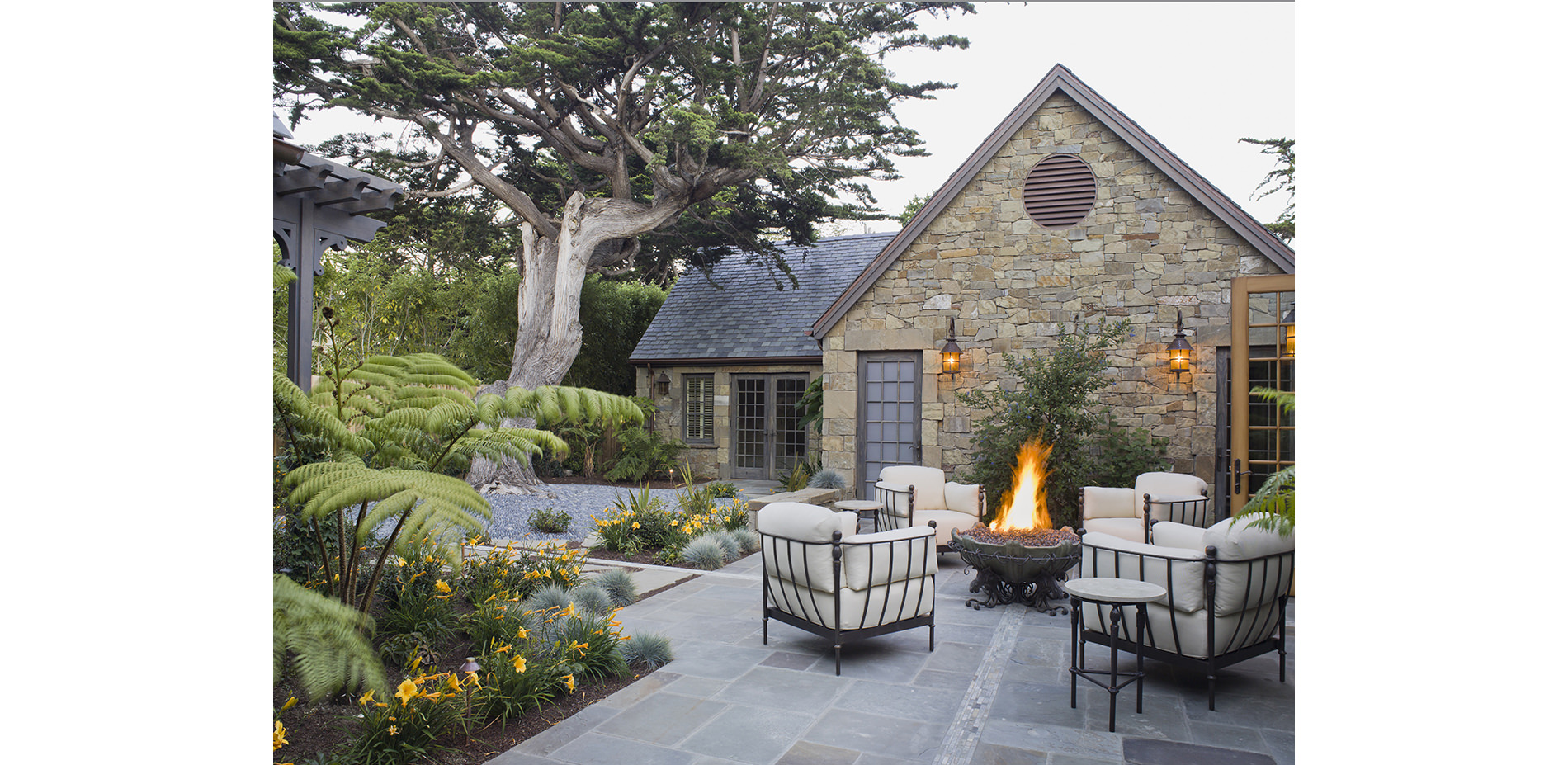
We were encouraged by our art collector client to look deeply at every opportunity to turn a surface or feature into a work of art. We considered every opportunity to include handcrafted elements, like the fire pit in this courtyard.
Photo Credit: David Livingston
Media: Please submit high-resolution image requests to images@asla.org.
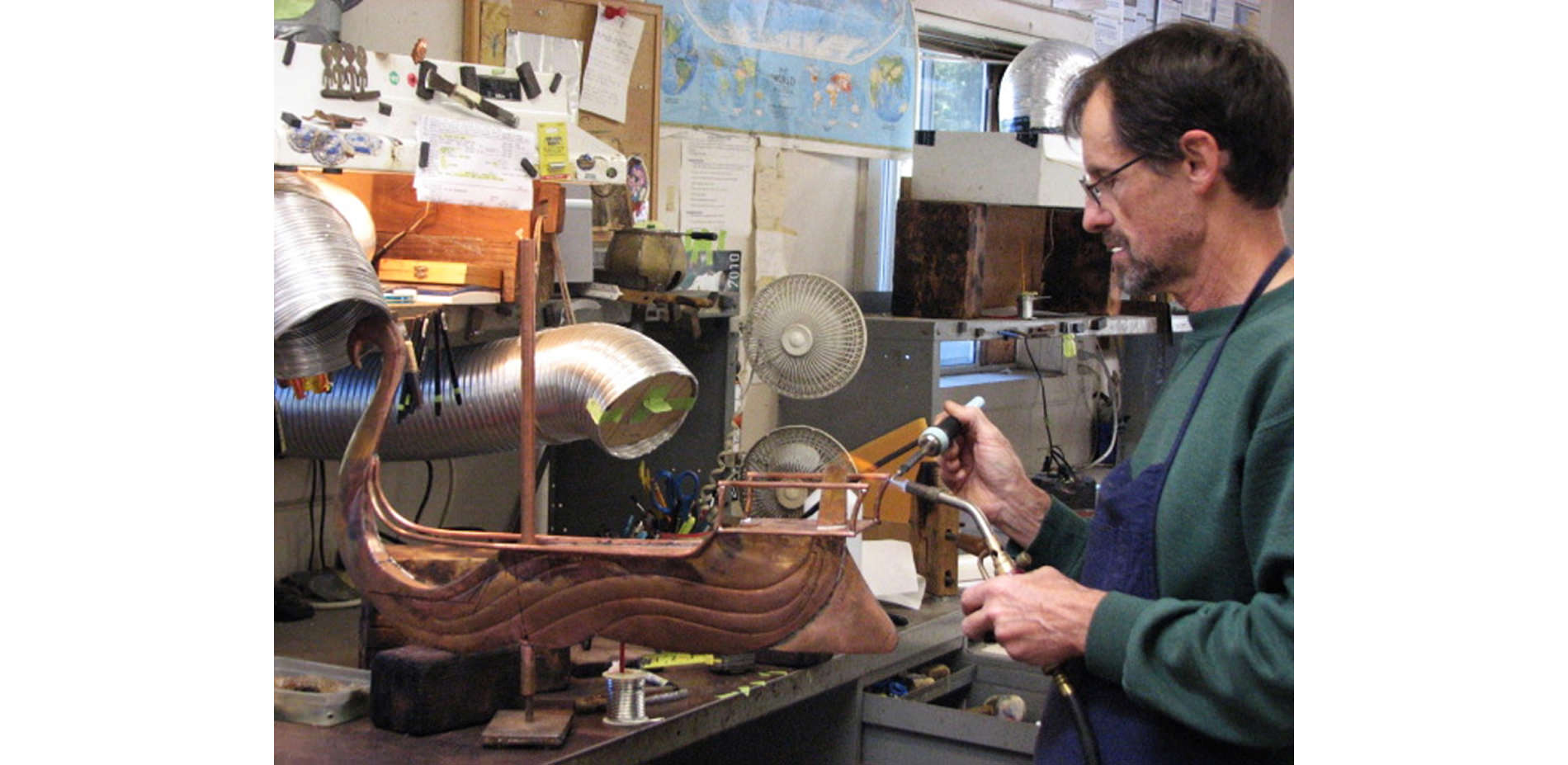
An artisan works on a custom weather vane.
Photo Credit: Arterra
Media: Please submit high-resolution image requests to images@asla.org.
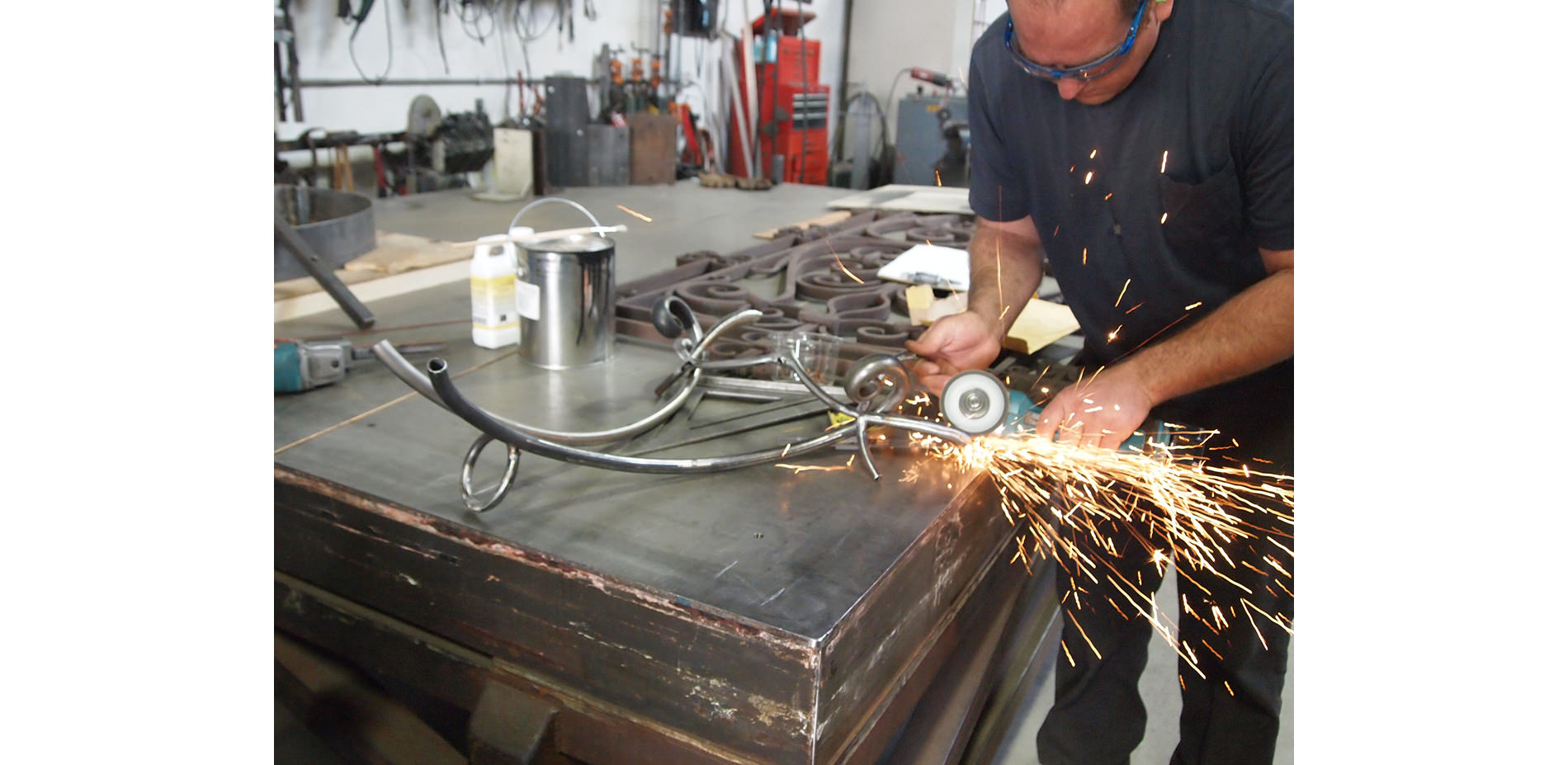
An artisan crafts our design in wood.
Photo Credit: Arterra
Media: Please submit high-resolution image requests to images@asla.org.
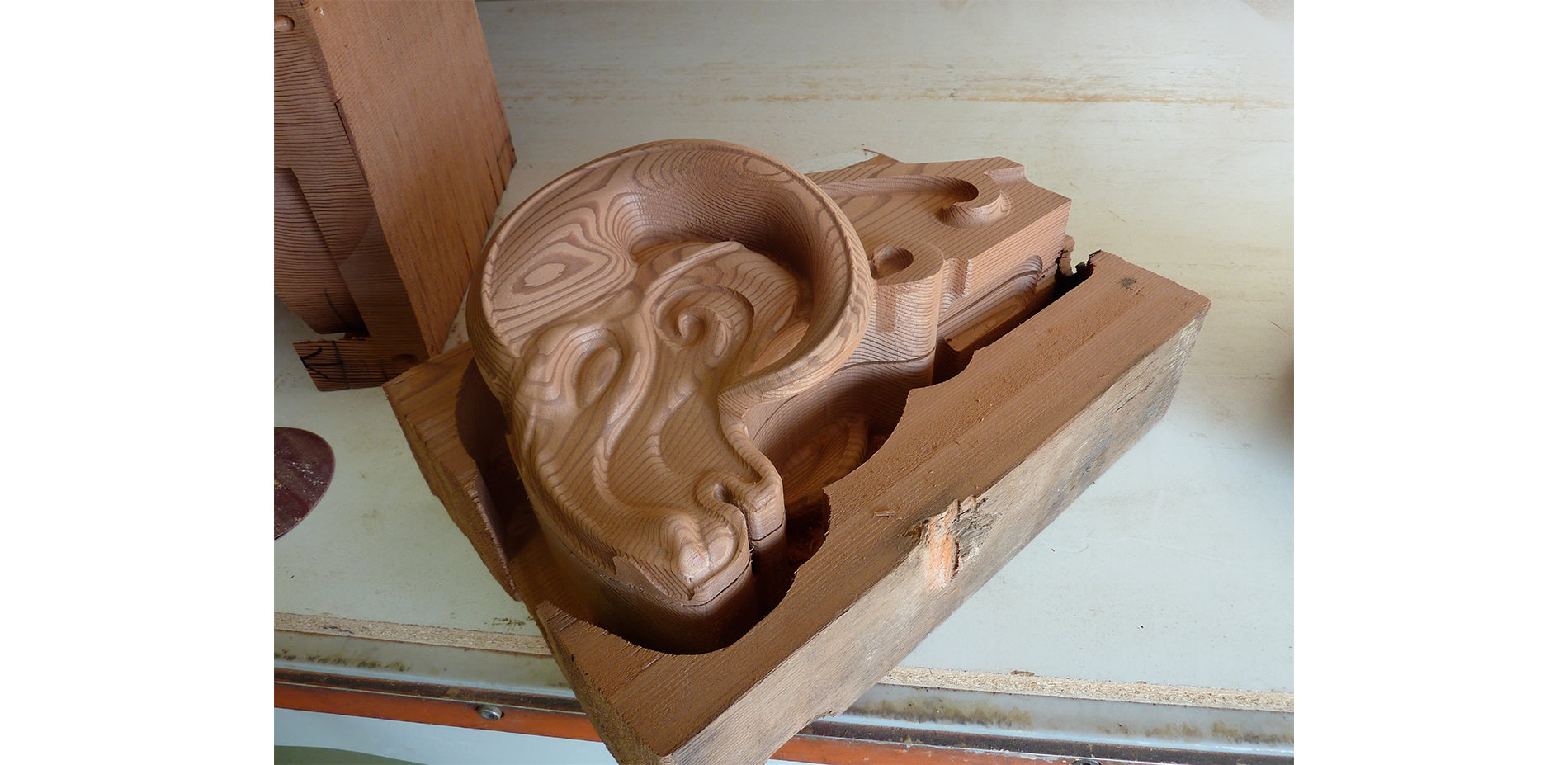
Carved wood, stone, forged bronze, glass and clay were the materials of choice. Plantings are maintained with minimal, seasonal pruning.
Photo Credit: Marion Brenner
Media: Please submit high-resolution image requests to images@asla.org.
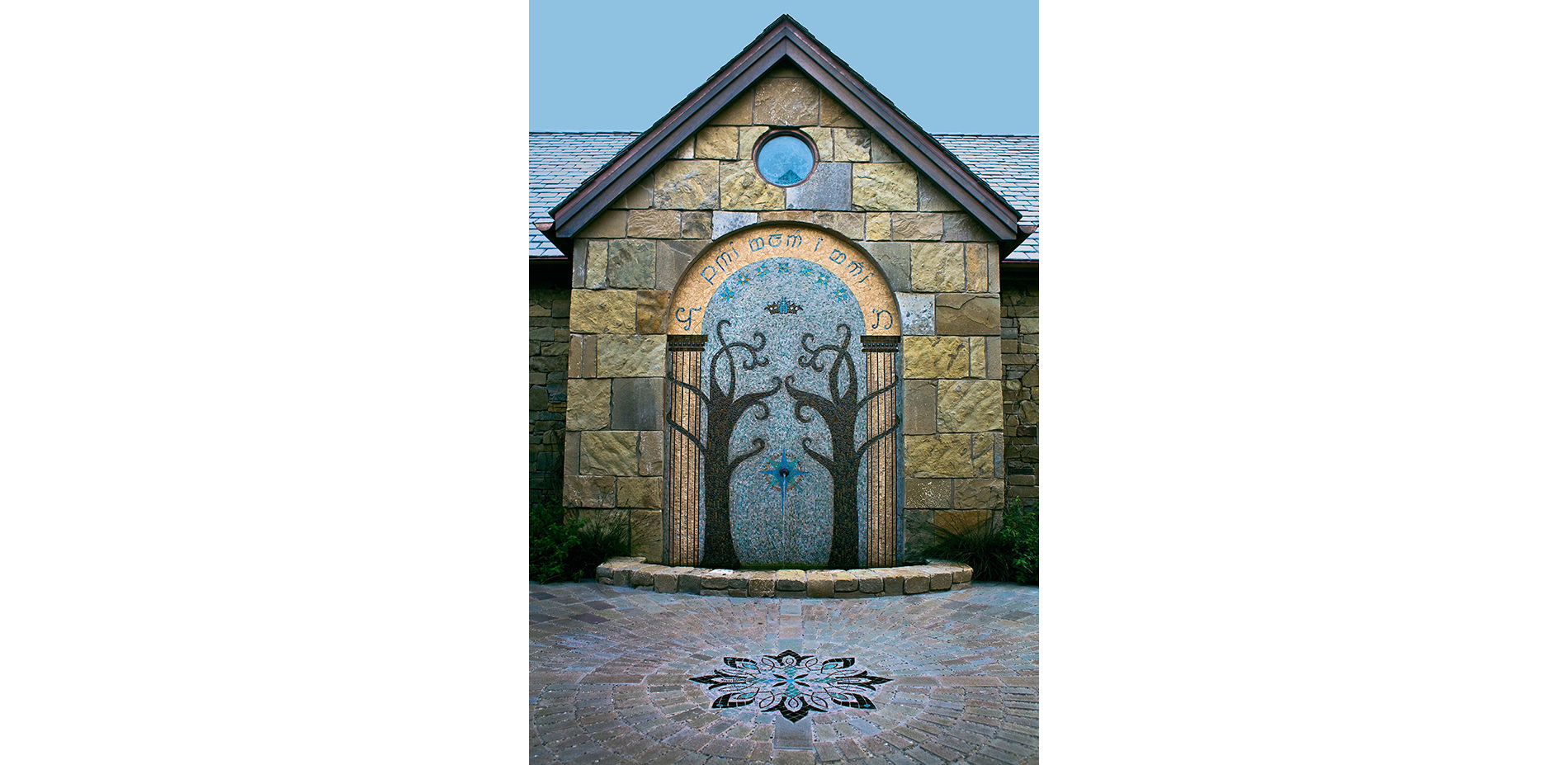
This detailed mosaic fountain speaks to the narrative aspects of the landscape.
Photo Credit: Rebecca Ford
Media: Please submit high-resolution image requests to images@asla.org.
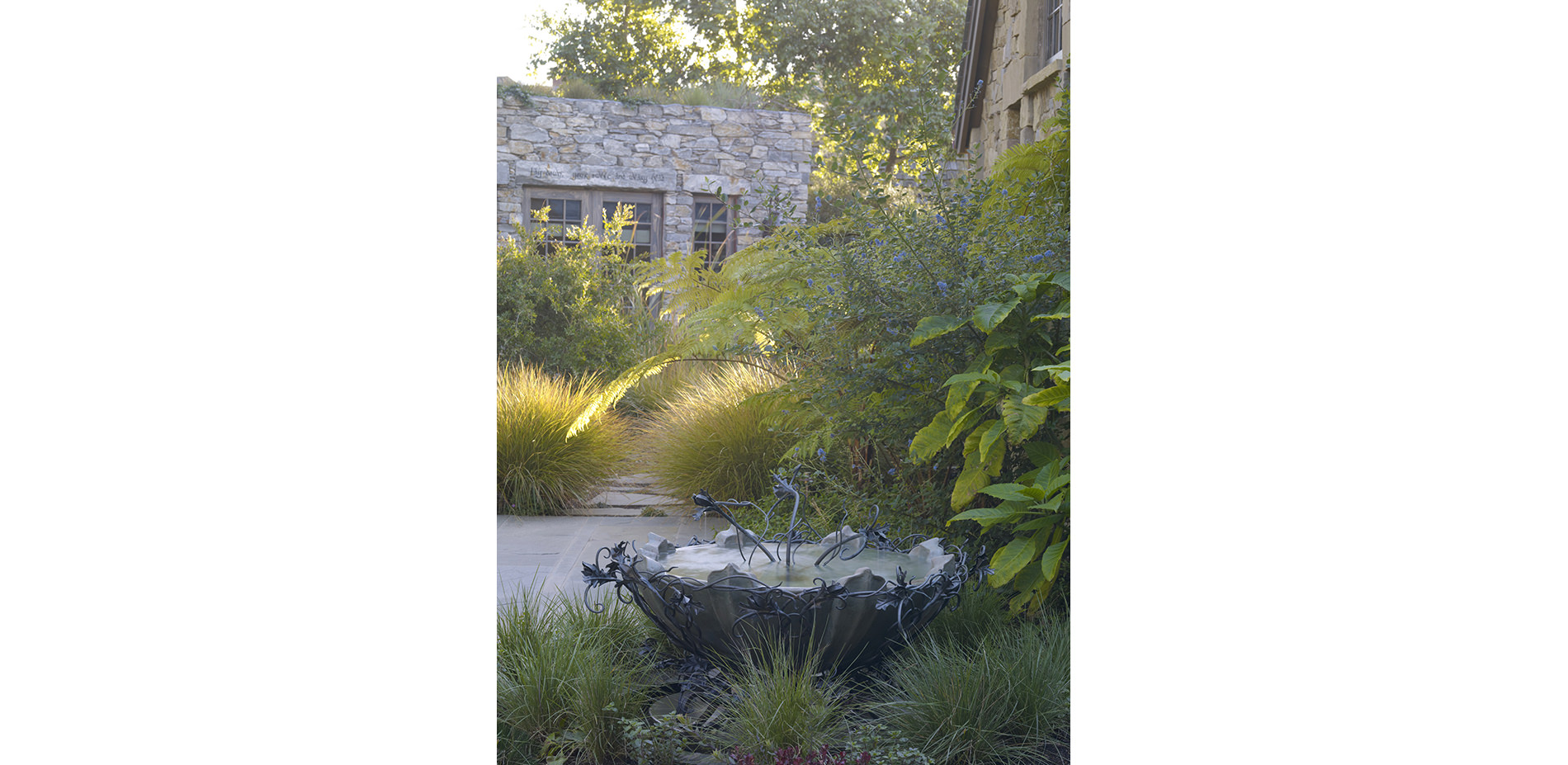
The custom fountain was crafted by an artisan, creating work for the local community.
Photo Credit: Marion Brenner
Media: Please submit high-resolution image requests to images@asla.org.
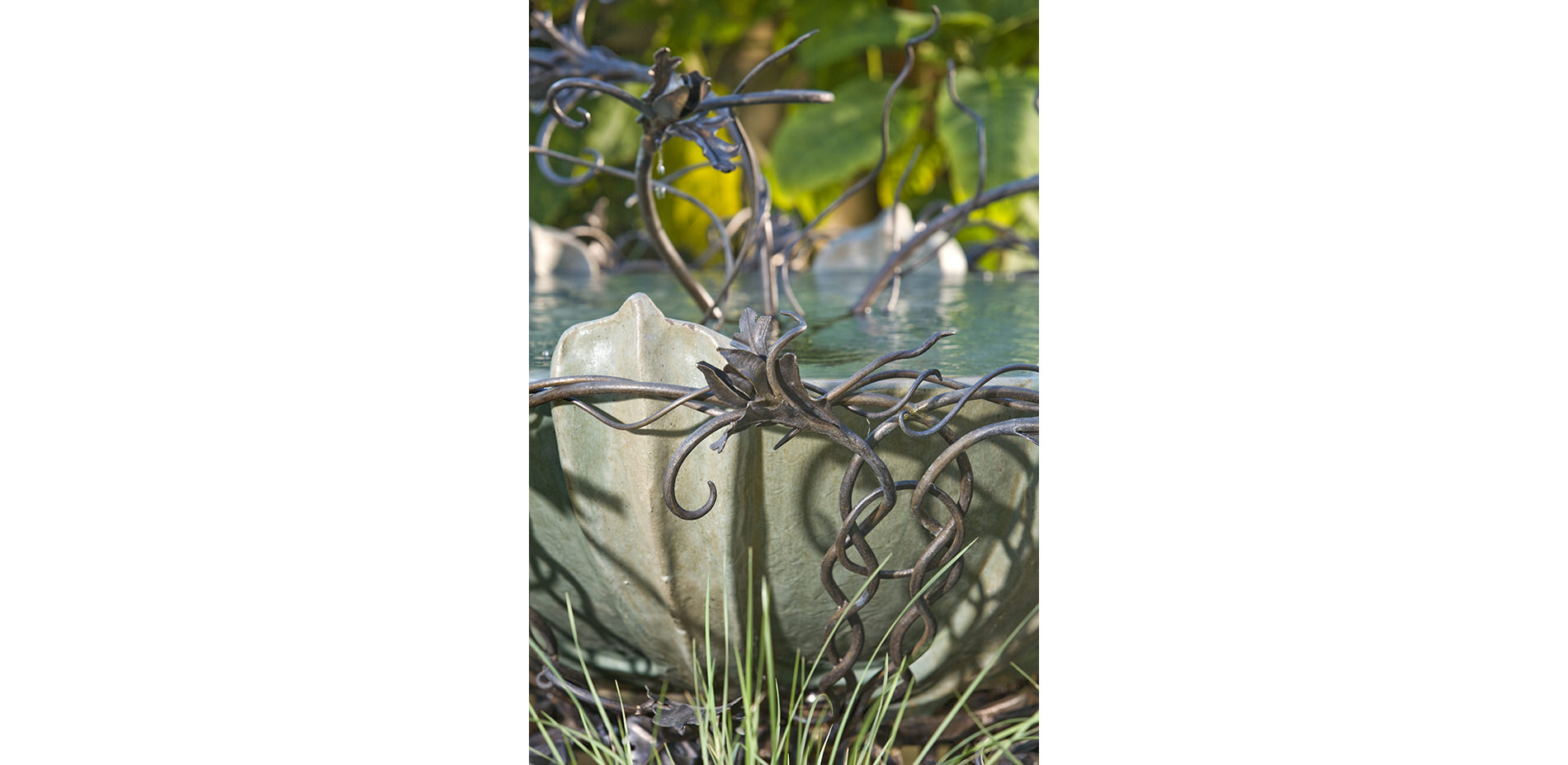
A close-up of the fountain, filled with water collected on-site.
Photo Credit: Ron Jones
Media: Please submit high-resolution image requests to images@asla.org.


















